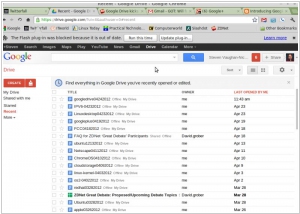Egnyte vs Google Drive
August 26, 2023 | Author: Michael Stromann
10
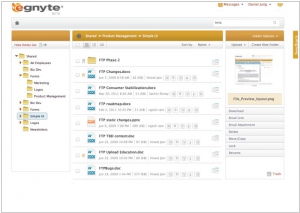
Egnyte Cloud File Server addresses the critical infrastructure needs of businesses - file storage, backup, sharing and collaboration - in one secure, centrally-managed and easy-to-use solution. In combination with its Local Cloud technology, Egnyte enables fast local edit capabilities and offline access to your files.
Egnyte and Google Drive are both cloud storage and file sharing solutions, but they have different strengths and target different audiences. Egnyte is designed for businesses, with a focus on security, data governance, and collaboration. It offers granular access controls, advanced security features, and robust integration with enterprise systems, making it suitable for organizations that prioritize data protection and compliance.
On the other hand, Google Drive is a widely used cloud storage platform that caters to both individuals and businesses. It offers seamless integration with other Google services, such as Google Docs, Sheets, and Slides, enabling easy collaboration and real-time editing. Google Drive also provides a generous amount of free storage and additional features like file sharing and synchronization across devices.
See also: Top 10 Cloud Storages
On the other hand, Google Drive is a widely used cloud storage platform that caters to both individuals and businesses. It offers seamless integration with other Google services, such as Google Docs, Sheets, and Slides, enabling easy collaboration and real-time editing. Google Drive also provides a generous amount of free storage and additional features like file sharing and synchronization across devices.
See also: Top 10 Cloud Storages
Egnyte vs Google Drive in our news:
2023. Egnyte is bringing generative AI capabilities for secure content collaboration
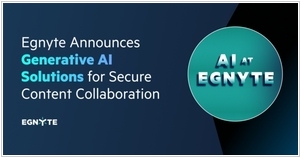
Cloud storage service Egnyte has introduced a new generative AI tool - a ChatGPT-like interface where customers can interact with the content stored in Egnyte to do things like create summaries of documents or review transcripts of video and audio to generate a list of key points or summaries. The company isn’t new to AI, but in the past, as with many enterprise companies announcing generative AI this year, it was taking care of background tasks like privacy, security and infrastructure management. In the future, the company plans to allow customers to query across a set of documents in a single folder or across multiple folders to locate content related to a particular subject, and that will bring powerful search capabilities to the content repository.
2022. Google is adding new Drive, Docs, Sheets, Slides and Keep optimizations for tablets
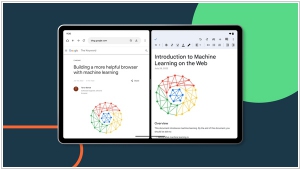
Google unveiled Android 12L earlier this year, aiming to enhance the usability of tablets. During the I/O conference, the company revealed its intention to optimize over 20 Google apps for larger screens. Today, Google has introduced several new features for Drive, Docs, Sheets, Slides, and Keep, taking a step towards fulfilling this commitment. The most noteworthy feature announced is the ability to effortlessly drag text or images between two Workspace apps that are open side-by-side. Google highlights that users can now drag content from apps like Chrome or Sheets and drop it directly into an existing document or spreadsheet cell. Additionally, in Google Drive, files can be swiftly uploaded by dragging and dropping them into the app. Furthermore, links to Drive files can be easily added by dragging the file into an open app like Keep.
2020. Egnyte introduces new features to help deal with security/governance during pandemic
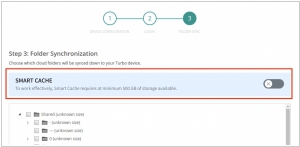
Egnyte is planning to introduce new features designed to assist companies in managing files effectively amidst the challenges posed by the pandemic. One of the key additions is the introduction of a feature called Smart Cache, which ensures that the frequently accessed content by individual users is readily available whenever they require it, regardless of its storage location. Additionally, Egnyte is launching an email governance tool that actively monitors the content, scanning it for known malware and ransomware. If any potentially harmful files are detected, the tool prevents their distribution, ensuring enhanced security measures.
2018. Egnyte releases one-step GDPR compliance solution
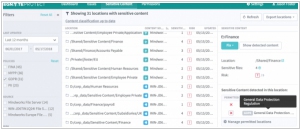
Egnyte has introduced a new feature to assist customers in adhering to the GDPR privacy regulations that recently came into effect in Europe. By simply enabling the "Identify sensitive content" feature and selecting the desired compliance rules, including GDPR, users can initiate a comprehensive scan of all their repositories. The system will identify content that falls under the sensitive category according to GDPR guidelines. The service will provide a list of files and assign them a risk factor ranging from 1 to 9, with 1 indicating the lowest risk and 9 indicating the highest. Depending on your preferred level of compliance tolerance, you have the flexibility to configure the program to display specific files.
2018. Google Drive added comments to Microsoft Office files
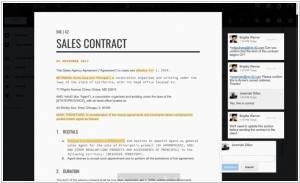
Google Drive has introduced a convenient solution for teams and agencies seeking to collaborate seamlessly using a combination of G Suite and Microsoft Office. Now, Google Drive users can easily add comments to Office files, PDFs, and images directly within the Drive preview pane. This eliminates the need to rely on external tools like Microsoft Office or Acrobat Reader, as well as the hassle of converting files to Google Docs, Sheets, or Slides formats. While it may not provide real-time commenting like G Suite or Office 365, this feature offers a significant improvement by eliminating the constant need to convert documents between Office and G Suite.
2017. Google launches Drive File Stream to replace the Google Drive desktop app for G Suite users
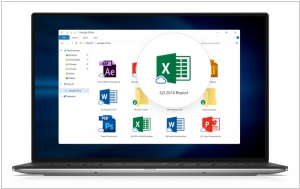
Google has introduced a new desktop application, called Drive File Stream, for Google Drive users who are subscribed to G Suite. This application will replace the existing Google Drive desktop app, which is scheduled to be discontinued next year. One notable distinction between the consumer and enterprise versions is the inclusion of administrative control features. Starting today, company IT departments will find the Drive File Stream settings within the Admin Console for their G Suite edition. This enables them to customize and deploy the solution within their domain, including options to enable synchronization, define installation preferences, disable automatic updates through Google Update, and manage other relevant configurations.
2017. Google Drive gets a new Backup & Sync desktop app
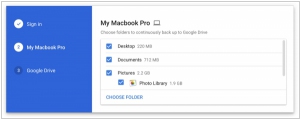
Google has unveiled its latest application, Backup and Sync, designed to facilitate the effortless backup of files and photos on both Mac and PC platforms. This utility serves as a replacement for the older Google Photos desktop app and the client applications of Google Drive. The newly introduced tool offers a user-friendly interface, where users can sign in to their Google account and select the folders they wish to continuously back up to Google Drive. Apart from backing up files stored on desktop computers, this software also allows users to back up photos from USB-connected devices like cameras and SD cards. As for business users, Google has plans to launch a dedicated enterprise solution called Drive File Stream, which will be made available to all G Suite users later this year.
2017. Google updated Drive with a focus on its business users
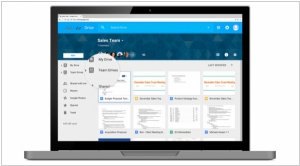
Google has implemented several updates to enhance its online file storage service, Google Drive, with a focus on improving its functionality for business and enterprise users. The primary emphasis is on providing a better service for teams within these organizations. As part of this effort, Google has made Team Drives available to all users after a preview phase that lasted approximately six months. Throughout the preview period, the team identified and addressed various issues, particularly related to permissions, to ensure a smooth general launch. Now, businesses of all sizes can leverage Team Drives for efficient file sharing within their enterprise. Another noteworthy addition is the general availability of Google Vault for Drive, which equips large enterprises, particularly those operating in regulated industries, with the necessary tools for archiving and data retention. This feature caters to the specific needs of these businesses, offering enhanced control and compliance capabilities. By prioritizing the requirements of business and enterprise users, Google Drive continues to evolve as a comprehensive and reliable file storage solution for organizations of all sizes.
2017. Egnyte Connect syncs files between the cloud and office
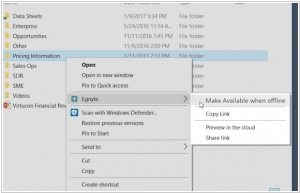
Egnyte has consistently distinguished itself from Box and Dropbox by offering a hybrid storage alternative instead of a fully cloud-based approach. With Egnyte, you can seamlessly incorporate on-premises files into your storage solution. They also provide assistance in managing these files, and Egnyte Connect plays a key role in this strategy. While Egnyte already offers a Connect mobile app for file viewing, the recent announcement of their desktop app aims to empower corporate business users, who typically use laptops, to effortlessly view and edit files both inside and outside the office. The beauty of this solution lies in the fact that users no longer need to worry about the file's storage location or syncing after they are done working with it.
2016. Google Drive gets intelligent search
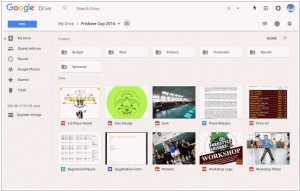
Google Drive is introducing an enhanced search capability that incorporates natural language processing and offers autocorrection suggestions for misspelled search terms. This means that when searching for documents, you can use phrases like "find my budget spreadsheet from last December" or "show me presentations from Anissa." As this feature is utilized more frequently, the search results will become increasingly precise. This development likely indicates that Google will soon integrate a voice interface into Google Drive as well.

